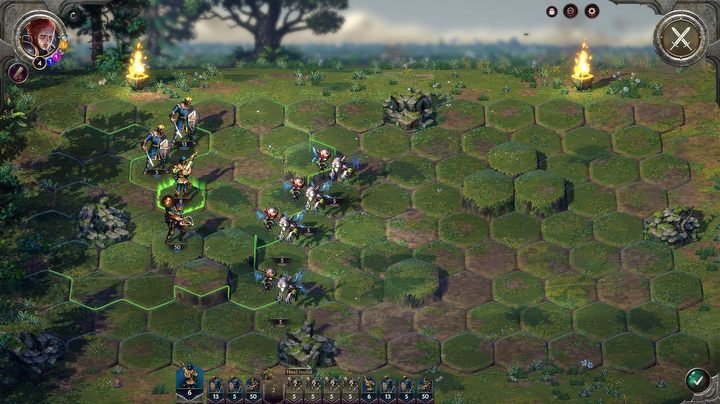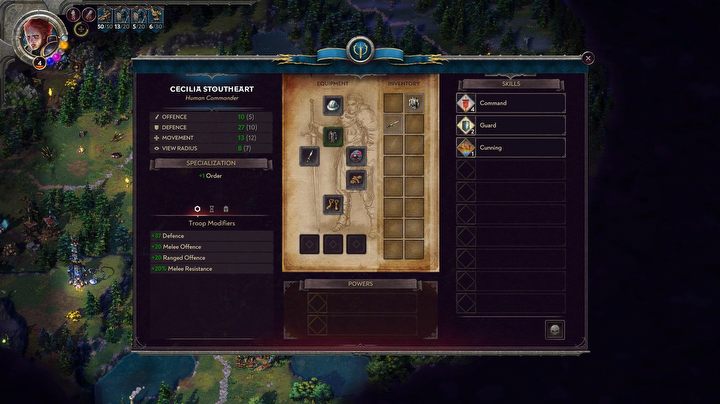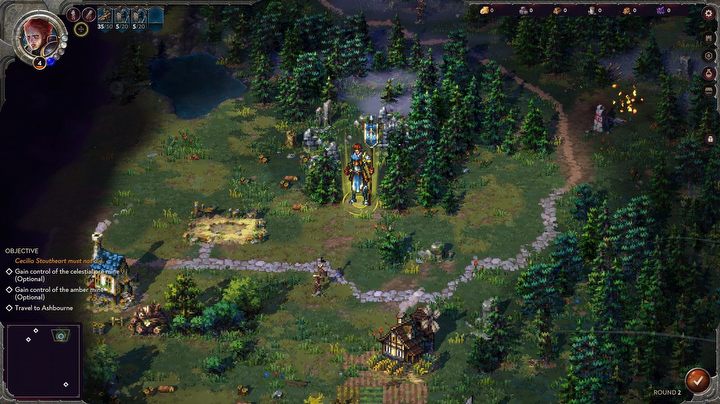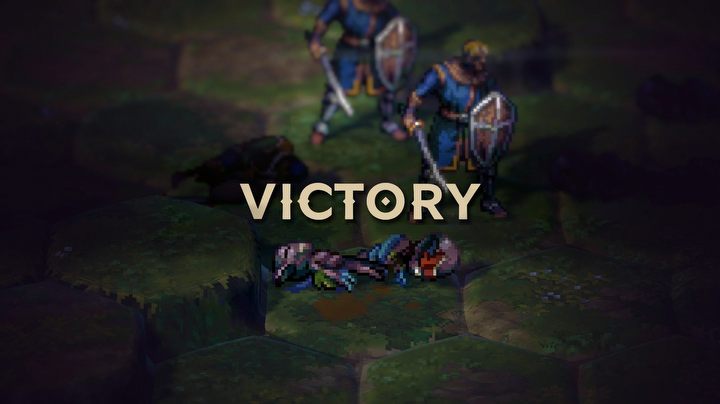Songs of Conquest Preview: Singing Hymns of High Praise
Is Songs of Conquest the Heroes of Might and Magic 3 worthy successor? Do we have a winner? Here's our preview of the Early Access version.
1999’s Heroes of Might & Magic 3 is certainly one of those all-time favorites that most gamers look back on with misty eyes. The Swedish developer, Lavapotion, clearly feels the same way about HoM&M3 as their spiritual successor to that classic title, Songs of Conquest, is set to enter Early Access on May 10th and I, luckily, got to spend some time with this new title.
My Steam account claims that I’ve only spent 15 hours with HoM&M3 HD. What Steam doesn't know, of course, is that 15 years prior to that, I spent at least double that time with the 1999 original and, in my mind, it certainly ranks among some of the other classics of that era such as Diablo 2, Warcraft 3, and Unreal Tournament.
Party like it’s 1999
Songs of Conquest squarely hits me in those, “party like it’s 1999” feels for sure, and in this Early Access version, it’s quite clear that Lavapotion has something special brewing here. They are tweaking a well-known formula quite cleverly with this experience. And, just like the fantasy/strategy classics of yore, Songs of Conquest also belongs to the genre of turn-based tactics and/or real-time strategy games, of which there are two different levels.
Firstly, you explore the world map with your powerful magician hero (called a “Wielder” here) and take care of the growth and/or management of your kingdom. The focus is on expanding your fortress, which belongs to one of four factions: The kingdom of Arleon, the swamp folk of Rana, the necromancers from Loth, and the Barya realm of mercenaries and inventors.
With each new building and each new level, new possibilities open up for you: do you want to learn new magic? Then expand the mage tower! Or would you prefer to use stronger servants? Then build some barracks! HoM&M3 veterans know these tactics and strategies well.
Of course, for research and upgrades you first need materials such as gold, wood, and stone, and you obtain these by grabbing resource points such as mines, sawmills, and quarries. Again, familiar territory for any/all RTS veterans.
Secondly, when you encounter opponents, whether nasty beasts or enemy heroes/Wielders, the game switches to battlefield mode. Here, your army (consisting of knights, rangers, undead, and other fantasy creatures) compete in turn-and-hex-map-based tactical battles. However, it is here where genre veterans will notice some new features: the terrain plays a much greater role in Songs of Conquest, because there are differences in height that have a direct effect on the combat. For example, your ranged fighters deal more damage when firing from an elevated position, or when they are closer to the enemy. This allows for new tactics where you can yield a safe position for more offensive power.
Your Wielder does not actively fight, but supports your troops with spells. But this also works a little differently as well as each spell belongs to one of five elements. To cast the spells, however, you need appropriate mana, which you generate through attacks by your units.
For example, many troops of the Arleon faction belong to the element of order, which then fills up the corresponding mana supply with their attacks. However, each faction can fall back on several schools of magic through its unit. The knights can also hire fairies that belong to the chaos element. So whether you specialize in one magic school or mix and match them all affects not only the available spells, but also the composition of your armed forces.
Slick aesthetics
The Heroes of Might and Magic influence doesn't end there though. The art style is very reminiscent of that title, with Songs of Conquest featuring some incredibly detailed HD sprite work. In more contemporary terms what the graphics here remind me of are sunnier, more colorful versions of what Octopath Traveller and Triangle Strategy offer. Both the units and the overworld have a “crunchy” pixel art look to them that many 90’s strategy games employed. The overworld uses a cool mix of 2D and 3D to give elements like mountains a sense of scale and perspective.
The sprite work for the units themselves is brilliantly rendered in part due to the use color contrast as I touched upon previously. This gives the entire game a distinct look when compared to the titles it is drawing inspiration from which could sometimes have color pallets that seemed a bit washed out. The units themselves have some slick designs as well, with each of the four factions having rather distinct appearances and fighting styles.
It terms of music and story, Songs of Conquest delivers as well. I mean, the game has “Songs” in its title so one would think it would excel in the tunes department, and it certainly does. Bard/minstrel-esque sequences intercut each mission and they never failed to make me smile while the battle and overworld themes were appropriately subtle and epic when warranted…as were the over-arching narrative beats of the “ripped directly from a pulp fantasy novel” story.
Final thoughts
All in all, Lavapotion (and publisher Coffee Stain) seem to have a real winner on their hands here with Songs of Conquest, and my time spent with this Early Access version of the game was certainly well spent. The world is beautiful, the factions have diverse and thought-provoking personalities, and both the battles and exploration are briskly paced, fun, and absorbing. It’s the best kind of spiritual successor as it is not attempting to be excessively elaborate nor does it try to jam in overly complex systems, but it has put enough of a clever spin on the formula that inspired it to make me wonder if I should re-install Heroes of Might and Magic 3… just for old-times’ sake?




